 Nouakchott -
capital city of Mauritania
Nouakchott -
capital city of Mauritania
Is the captial city of Mauritania it is located on the edge of the Sahara desert. The city is quite spread out, with few tall buildings.
Nouakchott is built around a large tree-lined street, Avenue Abdel Nasir, which runs northeast through the city center from the airport. Other major streets are named for notable Mauritanian figures, or famous people of the 1960s: Avenue de Gaulle, Avenue Kennedy, and Avenue Lumumba, for example.
Nouakchott is a vital city to Mauritania because of imports and exports, particularly of certain minerals and crops. Nouakchott also has 8 oil rigs off the coast. Temperatures range between 33 °C and 13 °C , and the average rainfall is 130 millimetres a year.Nouakchott has grown rapidly since the 1950's with over 2 million people living there now. Most people who live in Nouakchott follow the Islamic faith and consider themselves Arabs.
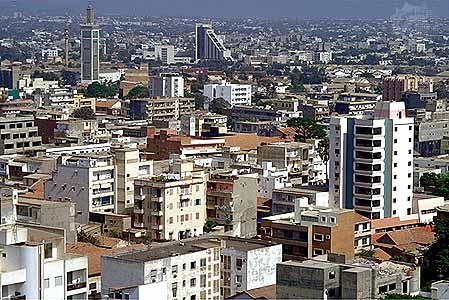 Dakar -
captial city of Senegal
Dakar -
captial city of Senegal
Is located on the Cape Verde Peninsula, on the country's Atlantic coast. It is Senegal's largest city. It is positioned, on the western edge of Africa (it is the westernmost African city). Dakar is a major regional port. The population of the Dakar is estimated at 2.45 million people.
Attractions in Dakar include major markets, Dakar Grand Mosque (built in 1964), Gorée Island, the IFAN Museum of West African culture, clifftop walks and beaches, and Hann Park, home to Senegal Zoo.
The town is home to the Léopold Sédar Senghor International Airport. It is also the end of the Dakar-Niger railroad line.Dakar is the finishing point of the Dakar Rally and is a member of the Organization of World Heritage Cities. Cheikh Anta Diop University, also known as the University of Dakar, was established in 1957. Islam is the main religion of Dakar and the official language is French although mainly different languages are spoken in Senegal.
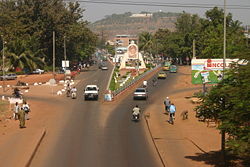 Bamako
capital city of Mali
Bamako
capital city of Mali
Bamako, population 1,690,471, is the capital and largest city of Mali, and currently estimated to be the fastest growing city in Africa (6th fastest in the world). It is located on the Niger River, near the rapids that divide the Upper and Middle Niger Valleys, in the southwestern part of the country. Bamako is the nation's administrative center, with a river port located in nearby Koulikoro, and a major regional trade and conference center. Manufactures include textiles, processed meat and metal goods.
The Niger river divides Bamako.Originally, the city developed on the northern side of the river, but as it grew, bridges were developed to connect the north with the south.
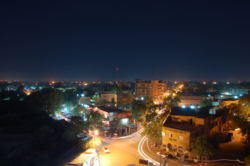 Niamey - captial city of Niger
Niamey - captial city of Niger
Lying on the Niger River, mostly on the east bank. It is an administrative, cultural and economic center.The population of Niamey is approximately 800,000 people, small for a captial city.The city is located in a pearl millet growing region. brick making , ceramic goods, cement manufacture and weaving are all important industries.
Niamey was founded in the eighteenth century, but was of little importance to most of the country until the French developed a colonial post in the 1890s. This rapidly grew into an important centre. In 1926 it became the capital of Niger. The major cause of the the increase in size of Niamey which was until recently a very small city, has been people moving in to escape droughts.
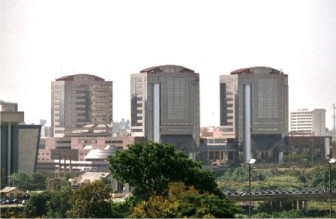 Abuja - captial city of Nigeria
Abuja - captial city of Nigeria
Is located in the centre of Nigeria in the Federal Capital Territory (FCT). Abuja is a "planned" city, as it was mainly built in the 1980s and officially became Nigeria's capital on 12 December 1991, replacing the role of the previous capital Lagos. Abuja has a population of 778,567. Abuja's is defined by Aso Rock, a 400-metre high cliff left by water erosion.
Other sights include the Nigerian National Mosque and the Nigerian National Christian Centre. The city is served by the Nnamdi Azikiwe International Airport, while Zuma Rock lies nearby. Abuja is known for being the best purpose-built city in Africa as well as being one of the wealthiest and most expensive; however, the population on the semi-developed edges of the city are living in shanty towns such as Karu. Karu, built to house the capital's civil servants and lower income families, has no running water, sanitation or electricity.
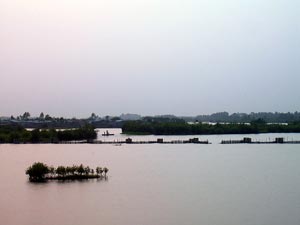 Porto Novo - capital city of Benin
Porto Novo - capital city of Benin
(also known as Hogbonou and Adjacé has a population 223,552 and is the official capital of the West African nation of Benin. It is a port on an inlet of the Gulf of Guinea, in the southeastern part of the country. Porto-Novo is Benin's second largest city, but the city of Cotonou is more important, culturally and politically. The region around Porto-Novo produces palm oil, cotton and kapok. Petroleum was discovered off the coast of the city in the 1990s, and has become an important export.
Many Afro-Brazilians settled in Porto-Novo following their return to Africa after emancipation from slavery in Brazil. Brazilian architecture and foods have become important in the city's cultural life.
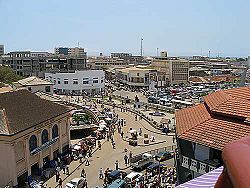 Accra - capital city of Ghanna
Accra - capital city of Ghanna
Accra is the biggest city in and the capital of Ghana. It is the administrative, communications, and economic center of the country. Over 70% of Ghana's manufacturing capacity is located within the capital area. Accra has been Ghana's capital since 1877, and contains many fine public building
Among the attractions of Accra are the National Museum, with a display of exhibits that reflect the heritage of Ghana from prehistoric times to modern times, the National Theatre with its distinct modern architecture, , the Kwame Nkrumah Mausoleum, the Accra International Conference Centre, the fishing port at Jamestown and Makola Market.
Accra is also linked internationally by the Kotoka International Airport.